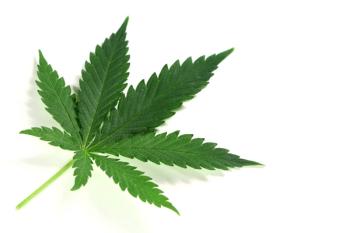
Neuroprotective Potential of N-Acetylcysteine: Mitigating Cannabis-Induced Neuropsychiatric Risks in Adolescence
A new study demonstrates the neuroprotective properties of the supplement N-Acetylcysteine against effects of cannabis exposure in adolescence.
A recently published study (1) found that the antioxidant, N-Acetylcysteine (NAC), could protect adolescent brains from developing anxiety and depressive behaviors caused by sustained exposure to tetrahydrocannabinol (THC). NAC, available as a dietary supplement, has been generally proposed as a treatment for neuropsychiatric conditions due to its ability to regulate neurotransmitter balance, regulate oxidative stress, and more.
As explained in the study, sustained exposure to THC in early adolescence can lead to “neuropsychiatric vulnerability, including mood and anxiety-related symptoms” later in life. In particular, nucleus accumbens (Acb), a common link for signaling pathways related to affective disorders and addiction, is susceptible to alteration by THC. Additionally, developing brains are sensitive to oxidative stress, which cannabis increases. Mood and anxiety disorders are associated with compromised antioxidant responses.
Using rodent models, the researchers tested the effect of THC on adolescent rats and the effects of NAC as an intervention. “We report that adolescent THC induces long-lasting anxiety and depressive-like phenotypes, concomitant with dissociable molecular and neuronal activity alterations in AcbSh vs. AcbC,” the researchers stated. “Remarkably, NAC administration normalized these THC-induced phenotypes while preventing dysregulations in metabolomic biomarkers associated with mood and anxiety-related pathophysiology.”
“Our study provides several novel discoveries linking the impacts of cannabinoid-induced striatal pathophysiology on markers for affective dysregulation which is a concerning risk factor for chronic adolescent cannabis use,” the researchers concluded. “Importantly, the present findings suggest that antioxidant interventions may serve as a potential pharmacotherapeutic approach to the prevention of neurodevelopmental disorders induced by cannabis exposure.”
Reference
- De Felice, M., Szkudlarek, HJ., Uzuneser, TC., Rodríguez-Ruiz, M., Sarikahya, MH., Pusparajah, M., Galindo Lazo, JP., Whitehead, SN., Yeung, KKC., Rushlow, WJ., Laviolette, S. The Impacts of Adolescent Cannabinoid Exposure on Striatal Anxiety and Depressive-like Pathophysiology are Prevented by the Antioxidant N-Acetylcysteine. Biological Psychiatry: Global Open Science. 2024, DOI:
10.1016/j.bpsgos.2024.100361
Newsletter
Unlock the latest breakthroughs in cannabis science—subscribe now to get expert insights, research, and industry updates delivered to your inbox.



